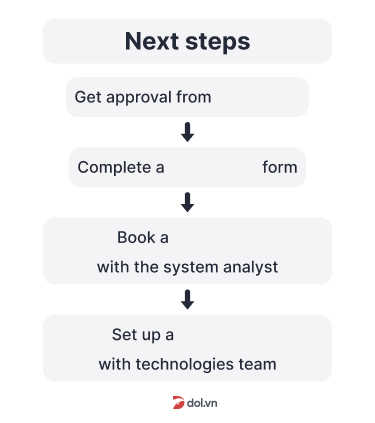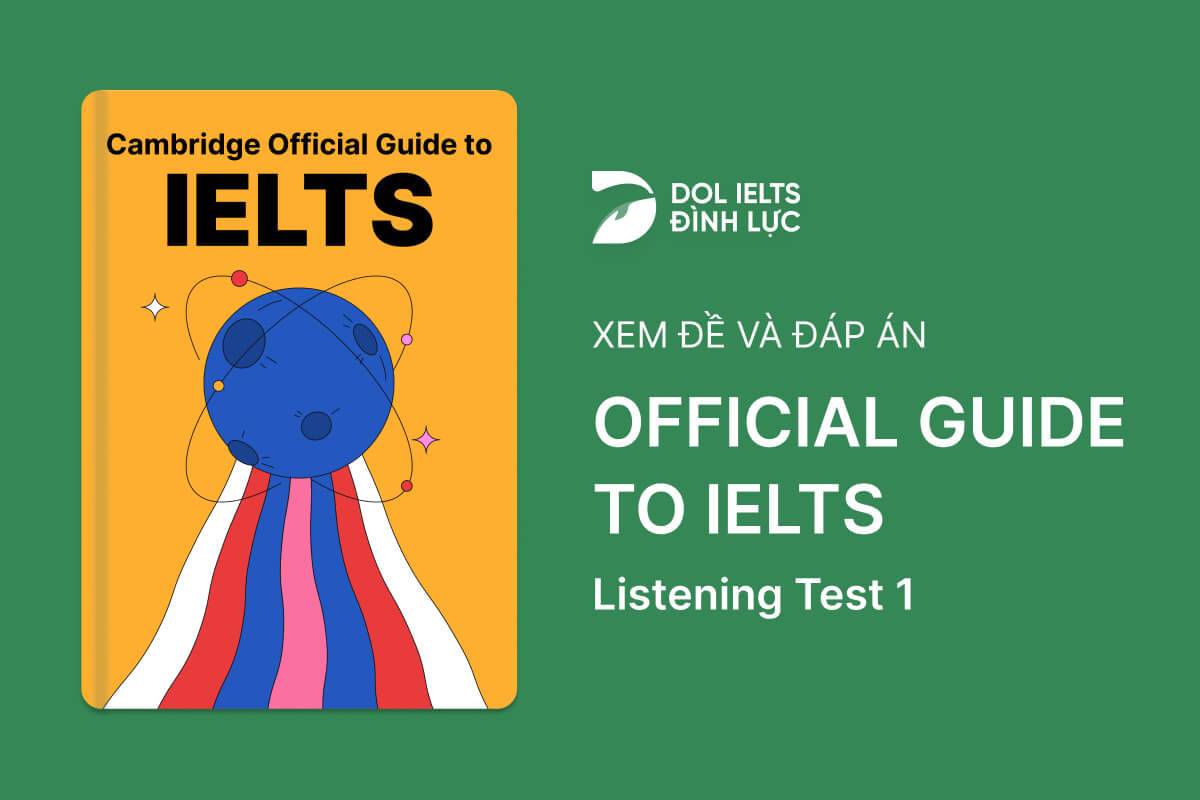Official Cambridge Guide To IELTS - Listening Test 1 With Practice Test, Answers And Explanation
Luyện tập đề IELTS Online Test Official Cambridge Guide To IELTS - Listening Test 1 được lấy từ cuốn sách Official Cambridge Guide To IELTS với trải nghiệm thi IELTS trên máy và giải thích đáp án chi tiết bằng Linearthinking, kèm answer key và list từ vựng IELTS cần học trong bài đọc.
Section
👂️ Bài nghe section 1
❓ Tapescript section 1
🔥 Đáp án & giải thích section 1
Giải thích chi tiết
 Mình cần biết cuộc đua sẽ bắt đầu từ đâu (start of run: in front of ....... )
Mình cần biết cuộc đua sẽ bắt đầu từ đâu (start of run: in front of ....... )
=> Đáp án sẽ tới sau "But it’s quite big and I’m not sure where to go'' (hỏi địa điểm)
 Dave trả lời là ''The run starts at the café, goes past the tennis courts then twice around the lake and finishes back where it started.''
Dave trả lời là ''The run starts at the café, goes past the tennis courts then twice around the lake and finishes back where it started.''
=> Điểm bắt đầu là ở một quán cà phê
=> Đáp án là cafe 
 P/s: Dave có nhắc tới hai địa điểm khác là tennis court và lake nhưng chúng đều không phải là điểm xuất phát (mình chỉ chạy qua tennis court và lake thôi) => Loại tennis court và lake
P/s: Dave có nhắc tới hai địa điểm khác là tennis court và lake nhưng chúng đều không phải là điểm xuất phát (mình chỉ chạy qua tennis court và lake thôi) => Loại tennis court và lake 
Section
👂️ Bài nghe section 2
❓ Tapescript section 2
🔥 Đáp án & giải thích section 2
Giải thích chi tiết
 Mình cần biết có thể xem gì ở aquarium (dolphin and .... )
Mình cần biết có thể xem gì ở aquarium (dolphin and .... )
=> Đáp án sẽ có sau ''The next stop after the station is the aquarium ...''
 Mình nghe được là ''... which is famous for its dolphin show and which has recently expanded to include sharks.''
=> Mình có thể xem cá heo và cá mập.
=> Đáp án là sharks
Mình nghe được là ''... which is famous for its dolphin show and which has recently expanded to include sharks.''
=> Mình có thể xem cá heo và cá mập.
=> Đáp án là sharks 
Section
👂️ Bài nghe section 3

❓ Tapescript section 3
🔥 Đáp án & giải thích section 3
Giải thích chi tiết
 Đối tượng của câu là hệ thống vi tính (computer system has)
Đối tượng của câu là hệ thống vi tính (computer system has)
=> Đáp án sẽ có sau '' ... I use a computer system to help process student enrolments and to do the timetabling.''
 Đầu tiên Dave đưa thông tin là ''It's over ten years old and although it was fine when it was first introduced, it is just not good enough now.''
Đầu tiên Dave đưa thông tin là ''It's over ten years old and although it was fine when it was first introduced, it is just not good enough now.''
=> Bạn để ý Dave có bảo là nó có chạy tốt vào lúc đầu, không phải là nó chưa bao giờ chạy tốt => Loại đáp án B 
=> Hệ thống đã hơn 10 năm tuổi rồi mà giờ nó đã không còn đủ tốt (lỗi thời). => Đáp án là C (oudated) 
Section
👂️ Bài nghe section 4
❓ Tapescript section 4
🔥 Đáp án & giải thích section 4
Giải thích chi tiết
 Mình cần biết ceramics (gốm sứ) có từ bao giờ (Ceramics date back approximately .... )
Mình cần biết ceramics (gốm sứ) có từ bao giờ (Ceramics date back approximately .... )
=> Đáp án sẽ có sau ''So how did it all begin?''
 Theo người nói, ''Well it all started around 29.000 years ago when humans discovered that ...'' => Gốm sứ đã xuất hiện 29.000 năm trước.
=> Đáp án là 29,000 years.
Theo người nói, ''Well it all started around 29.000 years ago when humans discovered that ...'' => Gốm sứ đã xuất hiện 29.000 năm trước.
=> Đáp án là 29,000 years.


